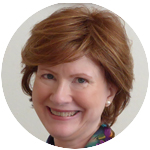
Maureen Pratt
Recent data for the United States released by the Center for Applied Research in the Apostolate show a downward trend in priestly ordinations, as well as the number of religious sisters and religious brothers, deacons and graduate-level seminarians.
For example, according to CARA, in 2015, there were 515 priestly ordinations, but only 495 in 2020, and the total number of religious sisters went from 48,546 in 2015 to 41,357 in 2020.
The impact of fewer vocations is felt by everyone in the church. The decline translates into myriad practical and pastoral issues, which many parishes have felt acutely.
It also increases the potential for a more severe personal toll on those in ministry; isolation, overwork and other stresses can lead to burnout or health issues for even the most devoted priest, brother, deacon or religious sister.
However, although the CARA statistics are sobering, this summer I happened upon a small magazine advertisement that offered an unexpected and creative possibility for improving the vocational void.
[hotblock]
The ad was placed by Sacred Heart Seminary and School of Theology in Hales Corners, Wisconsin. Its message, simply put, begins, “Do you know someone over 30 who might have a vocation?”
The ad includes information on how someone can engage in “honest talk to help discern God’s call,” with a variety of ways to connect, including by telephone, email, or even through a “Zoom Meet & Greet” with Deacon Steve Kramer, director of recruitment, director of homiletics, and associate professor of pastoral studies.
Often, awareness concerning vocations are focused on younger men and women. However, later vocations are certainly not new. Throughout the history of the church, men and women have entered religious life at various ages and stages of their Christian journeys.
St. Elizabeth Ann Seton was married and widowed and the mother of several children before she took her first religious vows at age 34. St. Augustine of Hippo did not completely convert to Christianity until his early 30s.
The need revealed by the CARA report seemed to dovetail with the opportunity offered by Sacred Heart. To find out more, I contacted the seminary and school of theology and talked with Deacon Kramer and vice president of institutional advancement Monica Misey.
“When COVID happened,” said Misey, “people were at home and rethinking their lives a little bit. We started Zoom meet and greets and had a great response from people who didn’t know who to talk to.”
“We’re getting more interest, now,” said Deacon Kramer. “A lot of people who are 40, 45, out in the workforce for years, might have been considering being a priest, deacon or sister.”
Deacon Kramer clarified educational requirements, timing issues, and misinformation, especially regarding age.
“There’s a lot of misconception that you have to be younger,” he said. “Sometimes there’s a feeling of unworthiness. Everyone’s on a different journey. God writes straight with crooked lines.”
Deacon Kramer helps those who reach out find the best “fit” for their next steps.
Misey said, “Deacon Steve knows which dioceses might be open to a later vocation. He makes these connections.”
Although perhaps too soon to impact the overall data, Sacred Heart’s ad and use of technology seem already to be bearing fruit.
“Vocations might be dropping,” Misey said of the CARA data, “but we almost doubled our residential seminarians this year, in large part due to our outreach to later vocations. I hope more dioceses can be open to the idea.”
Deacon Kramer said, “These priests bring life experience with them that really brings something to their ministry. My pitch (to bishops) is ‘there’s always one guy in every diocese that you’d want to consider.'”
***
Pratt’s website is www.maureenpratt.com



Share this story